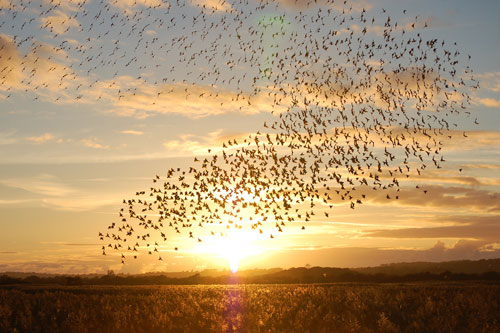Enterohemorrhagic Escherichia coli (EHEC) strains, of which E. coli O157:H7 is the best-studied serotype, are an important group of foodborne pathogens causing severe illness in humans worldwide.
 The main reservoirs for EHEC are ruminants, mostly cattle, which harbor the bacteria in their intestinal tracts without showing clinical symptoms. In this study, we used bovine lactoferrin, a natural occurring bactericidal and immunomodulating protein, as an antibacterial agent against EHEC infection in cattle.
The main reservoirs for EHEC are ruminants, mostly cattle, which harbor the bacteria in their intestinal tracts without showing clinical symptoms. In this study, we used bovine lactoferrin, a natural occurring bactericidal and immunomodulating protein, as an antibacterial agent against EHEC infection in cattle.
Nine 3-month-old Holstein-Friesian calves were experimentally infected with EHEC (strain NCTC12900). Three animals received a daily rectal spray treatment with bovine lactoferrin, three animals received an oral treatment, and three animals served as a control group. Blood samples were collected weekly and fecal samples twice weekly to monitor antibody responses and fecal excretion, respectively. Animals in the rectal group ceased shedding within 26 days of the experimental treatment and remained negative. This beneficial effect of bovine lactoferrin was not observed in the oral group, where animals were still shedding at the time of euthanasia (day 61). All groups developed serum responses, but no clear differences could be observed between the groups. However, the results indicate that the use of bovine lactoferrin as a rectal treatment can be a useful strategy to preclude further transmission of EHEC infections from cattle to humans.
Clearance of Escherichia coli O157:H7 Infection in calves by rectal administration of bovine lactoferrin
Applied and Environmental Microbiology
Kieckens E, Rybarczyk J, De Zutter L, Duchateau L, Vanrompay D, and Cox E

 hydrant water and onsite swimming pond water were used to extinguish the fire.
hydrant water and onsite swimming pond water were used to extinguish the fire.  He fears the droppings may also result in salmonella in his cattle’s dairy milk.
He fears the droppings may also result in salmonella in his cattle’s dairy milk. The American Veterinary Medical Association
The American Veterinary Medical Association